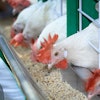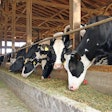
U.S. consumers remain interested in plant-based meat alternatives, but higher prices have led many prospective return consumers to taper off their purchases.
The price of plant-based meats is often several dollars a pound higher than for equivalent meat and poultry products. Beyond cost, lingering negative perceptions surrounding taste, value and versatility are also obstacles the category has yet to overcome.
According to anew report from CoBank’s Knowledge Exchange, the market for plant-based meats has likely reached a tipping point as the initial period of exceptional sales growth appears to be over.
Plant-based meat sales peaked in 2020 when consumers had more discretionary income and were curious about broadening their food spend in the wake of pandemic-era food shortages. But fewer than half of Americans who tried the products at the time repeated their purchase, per data from consumer research firm Mintel.
“Whatever their reason for purchase, plant-based offerings appear to have fallen short of consumers’ expectations in terms of either cost or performance,” said Billy Roberts, senior food and beverage economist for CoBank.
“Market participants should be able to address the cost issues with greater economies of scale and minimized supply chain expenses. However, innovation around taste, texture and mouthfeel will be essential to capture more mass-market consumers.”
Meat alternative sales have fallen steadily
Sales of meat alternatives have fallen steadily since 2021 and more sharply over the last year. Volume sales dropped 20.9% for the 52-week period ending July 2, 2023, according to consumer behavior research firm Circana.
Key to a higher consumer conversion rate will be a greater diversity of formats for plant-based meats, an area where the category has made some progress over the past year. Though still dominated by frozen and refrigerated options, category participants have thrown considerable investment into shelf-stable varieties, which grew by 82% in 2022. Those products include plant-based versions of tuna, ham and chicken that provide the benefit of convenience missing from some other options.
Due to the typically higher price point, plant-based consumers tend to be from higher-income households, limiting the category's household penetration to the range of roughly 10%. Those income levels may attract certain supermarkets, but larger growth will require new products and technologies that can add diversity to category offerings and scale-up existing product lines.
Consumers have consistently cited health as a top reason for purchasing plant-based offerings. Shoppers who initially sought plant-based meats thinking these were healthier options, however, would later voice doubts about the healthfulness of the products, specifically as it relates to their typically complex ingredient legend. Innovation in plant-based proteins will need to focus on replacing highly processed varieties with healthier alternatives.
The environmental benefit of plant-based alternatives is another primary driver of consumer interest, particularly among younger demographics.While the environmental and health benefits of plant-based solutions play a role in the products’ appeal, however, the key to plant-based success will be speed, convenience, cost and familiarity.
“在更低的价位和质量改进e category will resonate with a large portion of consumers interested in a more flexitarian approach to eating, whether due to environmental concerns or an interest in health,” said Roberts. “These consumers will not abandon animal-based meats entirely but augment their diets with plant-based options as occasions warrant and the products can meet their needs.”




















